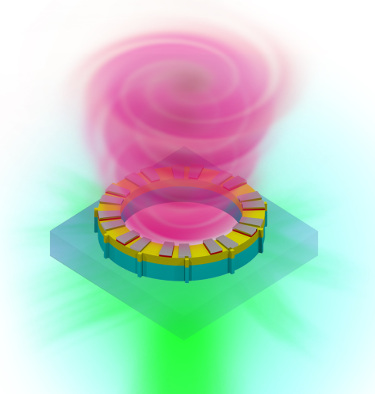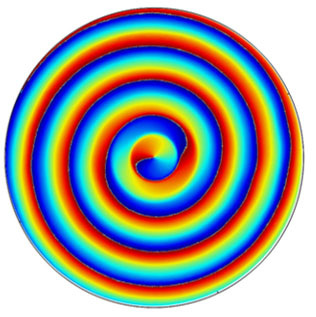 |
| August 16, 2016 | Volume 12 Issue 31 |
Designfax weekly eMagazine
Archives
Partners
Manufacturing Center
Product Spotlight
Modern Applications News
Metalworking Ideas For
Today's Job Shops
Tooling and Production
Strategies for large
metalworking plants
Vortex laser offers hope for Moore's Law
The optics advancement may solve an approaching data bottleneck by helping to boost computing power and information transfer rates tenfold.
By Cory Nealon, University at Buffalo
Like a whirlpool, a new light-based communication tool carries data in a swift, circular motion.
Described in a study published July 28, 2016, by the journal Science, the optics advancement could become a central component of next-generation computers designed to handle society's growing demand for information sharing.
It may also be a salve to those fretting over the predicted end of Moore's Law, the idea that researchers will find new ways to continue making computers smaller, faster, and cheaper.

This image shows a vortex laser on a chip. Because the laser beam travels in a corkscrew pattern, encoding information into different vortex twists, it's able to carry 10 times or more the amount of information than that of conventional lasers. [Credit: University at Buffalo]
"To transfer more data while using less energy, we need to rethink what's inside these machines," says Liang Feng, PhD, assistant professor in the Department of Electrical Engineering at the University at Buffalo's School of Engineering and Applied Sciences, and the study's co-lead author.
The other co-lead author is Natalia M. Litchinitser, PhD, professor of electrical engineering at UB.
Additional authors are: Pei Miao and Zhifeng Zhang, PhD candidates at UB; Jingbo Sun, PhD, assistant research professor of electrical engineering at UB; Wiktor Walasik, PhD, postdoctoral researcher at UB; and Stefano Longhi, PhD, professor at the Polytechnic University of Milan in Italy.
For decades, researchers have been able to cram evermore components onto silicon-based computer chips. Their success explains why today's smartphones have more computing power than the world's most powerful computers of the 1980s, which cost millions in today's dollars and were the size of a large file cabinet.
But researchers are running into a bottleneck in which existing technology may no longer meet society's demand for data. Predictions vary, but many suggest this could happen within the next five years.

A close-up look at the vortex laser beam. [Credit: University at Buffalo]
Researchers are addressing the matter in numerous ways including optical communications, which uses light to carry information. Examples of optical communications vary from old lighthouses to modern fiber-optic cables used to watch television and browse the internet.
Lasers are a central part of today's optical communication systems. Researchers have been manipulating lasers in various ways, most commonly by funneling different signals into one path, to carry more information. But these techniques -- specifically, wavelength-division multiplexing and time-division multiplexing -- are also reaching their limits.
The UB-led research team is pushing laser technology forward using another light-manipulation technique called orbital angular momentum, which distributes the laser in a corkscrew pattern with a vortex at the center.
Usually too large to work on today's computers, the UB-led team was able to shrink the vortex laser to the point where it is compatible with computer chips. Because the laser beam travels in a corkscrew pattern, encoding information into different vortex twists, it's able to carry 10 times or more the amount of information than that of conventional lasers, which move linearly.
The vortex laser is one component of many, such as advanced transmitters and receivers, which will ultimately be needed to continue building more powerful computers and datacenters.
The research was supported with grants from the U.S. Army Research Office, the U.S. Department of Energy, and National Science Foundation.
Published August 2016
Rate this article
View our terms of use and privacy policy
